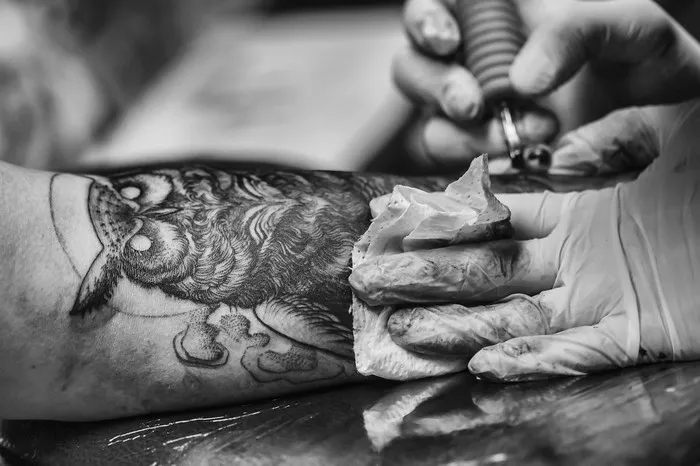Recent revelations in the ongoing investigation into the murder of Detective Garda Adrian Donohoe shed light on a significant development: a suspect in the case bears a tattoo on his back depicting imagery associated with the crime. The intricate artwork, showcased in the newly published book “Murder at Lordship” authored by Irish Independent journalist Robin Schiller and Pat Marry, offers insight into the efforts to apprehend those involved in the tragic incident.
Detective Garda Donohoe, aged 41 at the time, was fatally shot during an ambush at Lordship Credit Union near Dundalk on January 25, 2013, while on duty escorting cash.
One of the key individuals implicated in the investigation is Brendan ‘Benny’ Treanor, aged 34, whom authorities suspect to be among the perpetrators of the robbery. Though acquitted of direct involvement in the robbery following trial at the Special Criminal Court last year, Treanor was deemed by the presiding judges to be a broader member of the criminal group implicated.
During the trial proceedings, it emerged that Treanor had a conspicuous “gangster” tattoo emblazoned across his upper back in 2018, a full five years post the murder. The tattoo features iconography associated with the robbery, including firearms, currency, and depictions of individuals reminiscent of the crime’s circumstances.
The tattoo’s imagery notably incorporates elements central to the robbery, such as a long-barrelled gun atop a BMW car, mirroring the vehicle utilized in the crime. The registration plate on the car within the tattoo bears the acronym “Boss BFT,” believed by authorities to correspond to the surnames Brady, Flynn, and Treanor, potentially implicating others involved in the criminal network.
Convictions have already been secured in connection to the murder, with Aaron Brady and James Flynn serving sentences for their roles in the crime. However, the prosecution during Treanor’s trial contended that the tattoo served as a visual admission of his involvement in the robbery.
Senior counsel Brendan Grehan characterized the tattoo as tantamount to glorification of criminality, suggesting Treanor’s audacity in having it done post-interrogation by law enforcement reflected an unsettling level of confidence.
Notably, the tattoo features a depiction of a woman wearing a balaclava holding a firearm to her lips, hinting at earlier suspicions regarding the potential involvement of a female accomplice.
While the court acknowledged the tattoo as compelling evidence, Justice Tony Hunt emphasized its limitations in definitively tying Treanor to the specific events at Lordship Credit Union. Despite its incriminating nature, the tattoo alone did not provide conclusive proof of Treanor’s direct involvement in the crime, leading to his acquittal.
Nevertheless, the court maintained that Treanor’s close association with the criminal activities and his apparent endorsement of them, as symbolized by the tattoo, underscored the gravity of his involvement in the broader criminal network.

